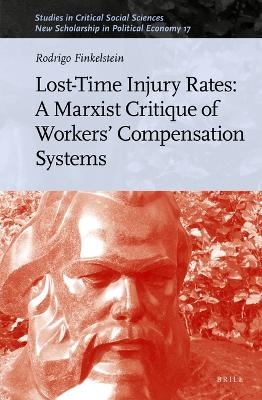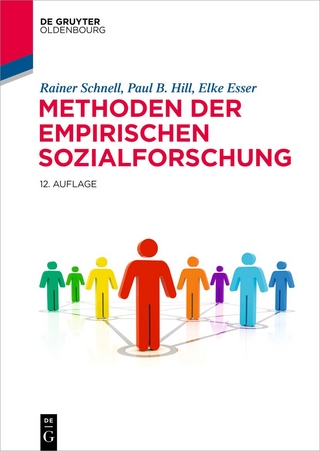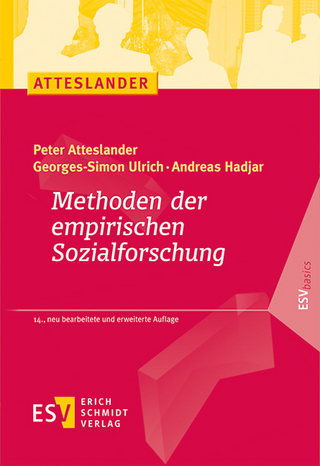
Lost-Time Injury Rates: A Marxist Critique of Workers' Compensation Systems
Brill (Verlag)
978-90-04-50711-1 (ISBN)
In Lost-Time Injury Rates Rodrigo Finkelstein examines the information-intensive operations of recording and processing work-related accidents, diseases and fatalities carried out by Workers’ Compensation Systems. Situated within the field of political economy of information, this critique contributes to the understanding of how injury rates service a specific sector of the economy by constructing lost labour power for sale.
The central argument of this critique can be stated as follows: grounded in the capitalist mode of production, injury rates constitute a historical social relation that, by taking the semblance of inductive indicators, conceal specific capitalist relations that bring about the exchange and distribution of lost labour power among capitalists and wage labourers.
Rodrigo Finkelstein Ph.D. (2022), Simon Fraser University, is an independant scholar. He is author of several articles on labour health, including Riesgos laborales: una visión cultural [Labour Risks: A Cultural View] (Editorial Universitaria, 2018).
Acknowledgements
List of Figures and Tables
1 Overview
1 Introduction
2 My Encounter with Injury Rates
3 Injury Rates as a Collection of Inductive Indicators
4 How to Approach Injury Rates
5 Theoretical Contribution
6 Outline of the Successive Chapters
2 Preconditions
1 Introduction
2 First Precondition: Wage Labour
3 Second Precondition: The Conflict between the Forces of Production and the Relations of Production
4 Third Precondition: A Burgeoning Capitalist Class
5 Fourth Precondition: Statistics and Probability
6 Fifth Precondition: Money
7 Sixth Precondition: A Capitalist State
3 Insurance Boards The Landlords of the Circuit of Metamorphosis of Lost Labour Power
1 Introduction
2 Insurance Boards as Part of the Information Sector
2.1 Risk as Expected Lost Labour Power
2.2 Risk as Information
2.2.1 Risk as Class Information
2.2.2 Risk as Lost-Time Injury Rates
2.2.3 Risk as an Informational Medium of Measurement and Monetization
2.2.4 Risk as an Informational Medium of Exchange
3 The Informational Landlords of the Circuit of Metamorphosis of Lost Labour Power
3.1 Stages of the Circuit of Metamorphosis of Lost Labour Power
3.1.1 The First Stage: C – M
3.1.2 The Second Stage: M – I
3.1.3 The Third Stage: I – MW
4 The Lost-Labour-Power Commodity
1 Introduction
2 The Commodity
3 The Information Commodity
4 The Lost-Labour-Power Commodity
4.1 The Satisfaction of Needs as a Means of Production
4.2 Use Value
4.3 Exchange Value
4.4 Value
4.5 Value and Lost Value: The Transformation of Non-Equivalents
5 The Commodification of Lost Labour Power
5.1 The Working-Day-Lost Moment
5.2 The Reporting Moment
5.3 The Recording Moment
5.4 The Processing Moment
5.5 The Programing Moment
5 The Fetishism of the Lost-Labour-Power Commodity
1 Introduction
2 Fetishism and Lost Labour Power
3 The Fetishism of the Lost-Labour-Power Commodity
4 The Value Fluctuation of the Commodity
4.1 Procedurally Hidden Social Relations
4.1.1 Value Fluctuation due to a Movement of Working Days Lost
4.1.2 Value Fluctuation Due To A Movement Of Reported Injury Claims
4.1.3 Value Fluctuation due to a Movement of Deeming Injury Claims
4.1.4 Value Fluctuation due to a Movement of Rate-Setting Mechanics
4.2 Structurally Hidden Social Relations
4.2.1 Value Fluctuation due to a Movement of the Wage-Labour Market
4.2.2 Value Fluctuation due to a Movement of the Economic Activity
4.2.3 Value Fluctuation due to a Movement of Cost-Shifting
5 The Relative Value and Price Fluctuation of the Commodity
5.1 Class-Hidden Social Relations
5.1.1 Relative Value and Price Fluctuation due to a Movement of Misreporting and Underreporting Injury Claims
5.1.2 Relative Value and Price Fluctuation due to a Movement of Appealing Legitimate Claims
5.1.3 Relative Value and Price Fluctuation due to a Movement of Managed Care
5.1.4 Relative Value and Price Fluctuation due to a Movement of Early-Return-to-Work Practices
5.1.4 Relative Value and Price Fluctuation due to a Movement of Vocational Rehabilitation Interventions
6 Lessons from the Social Totality
1 Introduction
2 Understanding Lost-Time Injury Rates as a Historical Socioeconomic Formation
2.1 Lost-Time Injury Rates as a Class Relation of Exchange and Distribution
2.2 Lost-Time Injury Rates Belong to Capital
2.3 The Value Forms of Lost Labour Power
2.4 The Lost-Labour-Power Commodity Is Not the Bearer of Lost Value
2.5 Lost-Time Injury Rates Do Not Provide Accurate Information
2.6 Lost-Time Injury Rates as a Structural Epistemological Ideology
3 Coda: The Solidification between Oppressor and Oppressed
References
Index
| Erscheinungsdatum | 19.04.2022 |
|---|---|
| Reihe/Serie | Studies in Critical Social Sciences / New Scholarship in Political Economy ; 216/17 |
| Zusatzinfo | 2 Line drawings, color; 3 Tables, black and white |
| Verlagsort | Leiden |
| Sprache | englisch |
| Maße | 155 x 235 mm |
| Gewicht | 538 g |
| Themenwelt | Sozialwissenschaften ► Soziologie ► Empirische Sozialforschung |
| Sozialwissenschaften ► Soziologie ► Mikrosoziologie | |
| Wirtschaft ► Volkswirtschaftslehre ► Makroökonomie | |
| ISBN-10 | 90-04-50711-6 / 9004507116 |
| ISBN-13 | 978-90-04-50711-1 / 9789004507111 |
| Zustand | Neuware |
| Haben Sie eine Frage zum Produkt? |
aus dem Bereich


